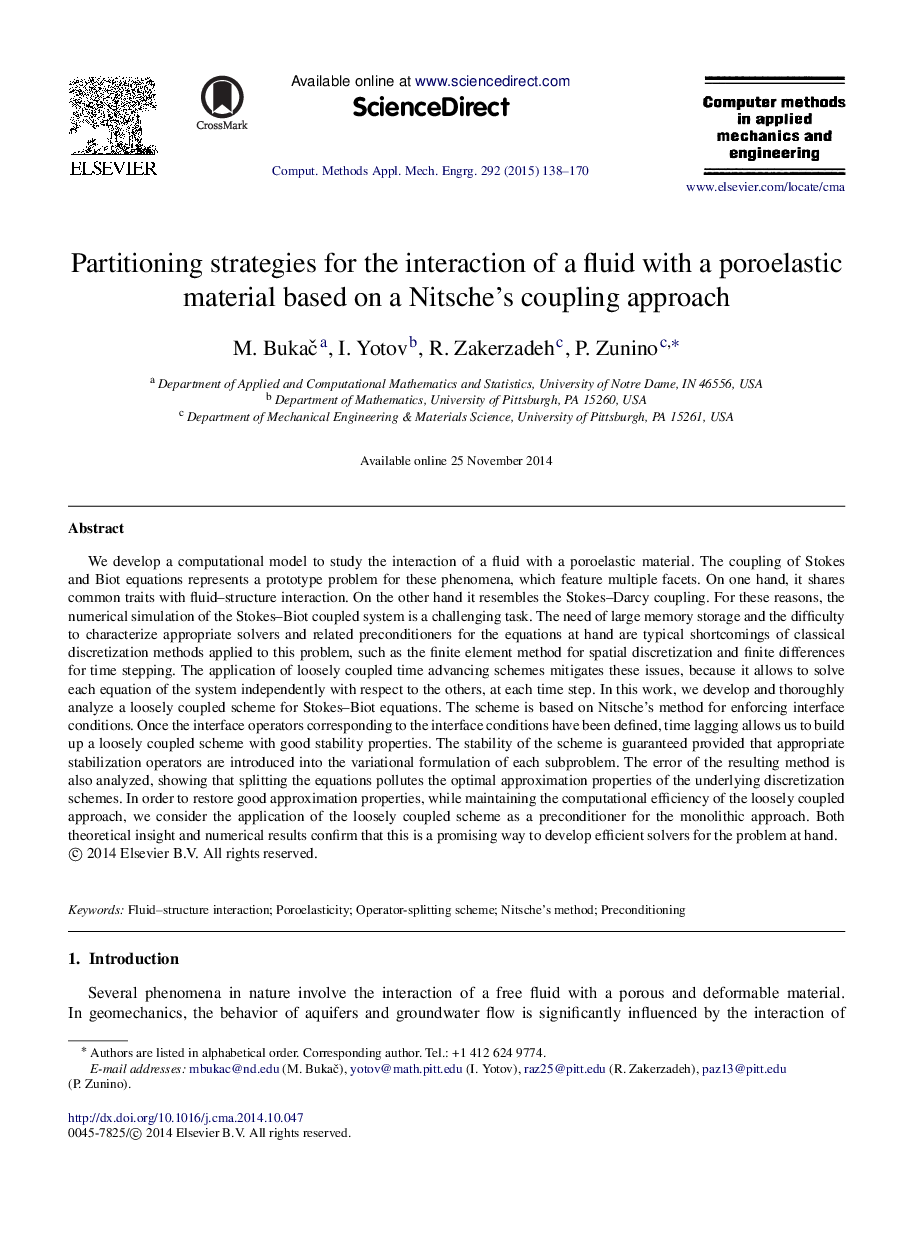| Article ID | Journal | Published Year | Pages | File Type |
|---|---|---|---|---|
| 497692 | Computer Methods in Applied Mechanics and Engineering | 2015 | 33 Pages |
We develop a computational model to study the interaction of a fluid with a poroelastic material. The coupling of Stokes and Biot equations represents a prototype problem for these phenomena, which feature multiple facets. On one hand, it shares common traits with fluid–structure interaction. On the other hand it resembles the Stokes–Darcy coupling. For these reasons, the numerical simulation of the Stokes–Biot coupled system is a challenging task. The need of large memory storage and the difficulty to characterize appropriate solvers and related preconditioners for the equations at hand are typical shortcomings of classical discretization methods applied to this problem, such as the finite element method for spatial discretization and finite differences for time stepping. The application of loosely coupled time advancing schemes mitigates these issues, because it allows to solve each equation of the system independently with respect to the others, at each time step. In this work, we develop and thoroughly analyze a loosely coupled scheme for Stokes–Biot equations. The scheme is based on Nitsche’s method for enforcing interface conditions. Once the interface operators corresponding to the interface conditions have been defined, time lagging allows us to build up a loosely coupled scheme with good stability properties. The stability of the scheme is guaranteed provided that appropriate stabilization operators are introduced into the variational formulation of each subproblem. The error of the resulting method is also analyzed, showing that splitting the equations pollutes the optimal approximation properties of the underlying discretization schemes. In order to restore good approximation properties, while maintaining the computational efficiency of the loosely coupled approach, we consider the application of the loosely coupled scheme as a preconditioner for the monolithic approach. Both theoretical insight and numerical results confirm that this is a promising way to develop efficient solvers for the problem at hand.
